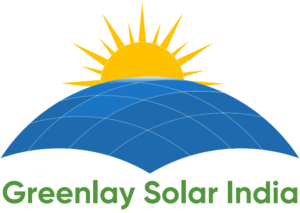Bifacial Solar Panels
Bifacial solar panels represent a significant moving ahead or up in related to electricity controlled by light technology, offering increased energy yields by taking and holding to prevent release sunlight on both the front and rear sides of the panel. This dual-sided design tells apart them from traditional monofacial panels, which only soak up like a towel sunlight from the front.
Definition and Structure
Bifacial solar panels have related to electricity controlled by light cells on both sides, allowing them to soak up like a towel direct sunlight from the front and reflected or spread out light from the rear. The rear side usually features a clear glass or polymer backsheet, instead of the light-blocking or difficult to understand backsheets found on ordinary panels. Many modern bifacial panels use a double-glass design, improving ability to last and weather resistance.
How Bifacial Solar Panels Work
Front Side: Functions like a standard solar panel, converting direct sunlight into electricity.
Rear Side: Captures added/more energy from sunlight reflected off surfaces such as the ground, water, or nearby structures. The effectiveness of this side depends on the reflectivity albedo of the surface beneath the panel.
Improved Yield: By using both sides, bifacial panels can create 5-30% more electricity than traditional panels, with even higher gains possible when paired with solar trackers or installed over highly mirror-like surfaces like snow or sand.
Key Features
FeatureBifacial Solar Panels
Light mental concentration/picking up of a liquidBoth front and rear sides
ConstructionDouble-glass or clear backsheet
wasting very little while working or producing something Gain5-30% higher than monofacial panels
Ability to last
Enhanced (double-glass design)
length of time something is alive Up to 30 years or more
WeightSlightly heavier due to dual glass
Cost15% higher honest & paid as a deposit than standard panels
Advantages
Higher Energy Output: Can produce up to 20-30% more energy compared to monofacial panels, especially in installations with high ground reflectivity or when using solar trackers.
Improved Performance in Low-Light: Take and hold to prevent release spread out and reflected light, extending operational hours and improving yield in less sunny conditions.
Ability to last and Long life:
Doubleglass construction increases resistance to weather, moisture, and mechanical stress, often resulting in longer warranties up to 25-30 years.
ability to do different things equally well:
Good for many different kinds of people or things installations, including ground-mounted systems, commercial rooftops, parkingcloth coverings that shelter, floating solar farms, and up-and-down applications in city-based areas.
Lower Levelized Cost of Energy (LCOE): Higher output per panel can reduce the overall cost of energy produced over the system‘s lifetime.
Disadvantages
Higher Initial Cost: Usually 15% more expensive than standard panels.
Increased Weight: The double-glass design adds about 2 kg per panel, which may require stronger mounting structures.
Installation Complex difficulty: Best performance needs/demands careful design to (make as big as possible) rear-side exposure to reflected light, making them less good for shaded rooftops or areas with low ground reflectivity.
Best for Particular Applications: Most effective in ground-mounted, commercial, or utility-scale projects, and less suited for typical (where there are lots of homes) rooftop installations.
Ideal Installation Pictures/situations
Large-Scale Ground-Mounted Solar Farms: makes as big as possible energy take and hold to prevent release from both direct and reflected sunlight, especially in areas with high albedo surfaces like sand or snow.
Commercial Rooftops: Effective when installed over mirror-like roofing materials.
Parking Lot (cloth coverings that shelter: Provide shade and take and hold to prevent release added/more energy from reflected light.
Floating Solar Farms: Benefit from water‘s high reflectivity, boosting rear-side generation.
Up-and-down City-based Installations: Can be (combined different things together so they worked as one unit into building building fronts/fake appearances, sound things that block or stop other things, and transit (basic equipment needed for a business or society to operate to use limited city-based space.
Farming-based Applications: Used in agro-(related to electricity controlled by light) systems, allowing dual land use for crops and energy generation.
Summary
Bifacial solar panels offer a forcing/forceful/interesting solution for making the most of solar energy production, especially in commercial and utility-scale applications. Their ability to take and hold (to prevent release) light from both sides leads to higher (wasting very little while working or producing something), better performance in varied lighting conditions, and improved ability to last. While they come with higher (money paid at the beginning) and installation (things to carefully think about), their increased energy produce and (ability to do different things equally well) make them a strong choice for projects where making the most of output per square meter is critical

